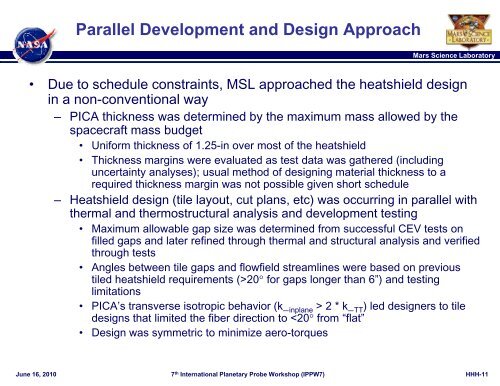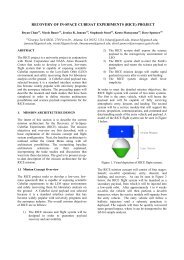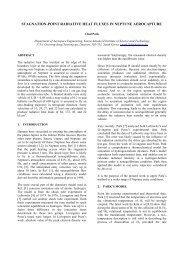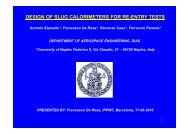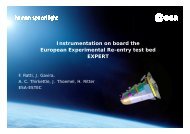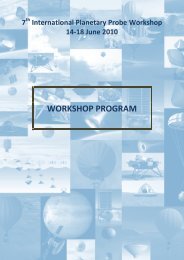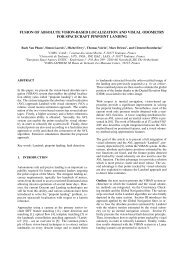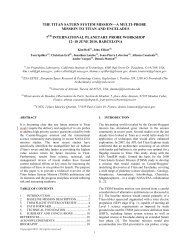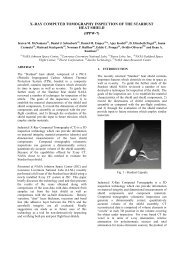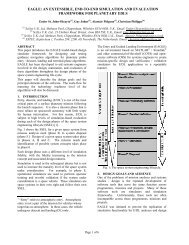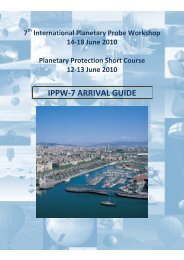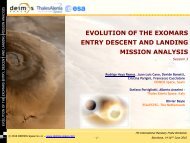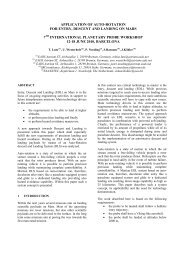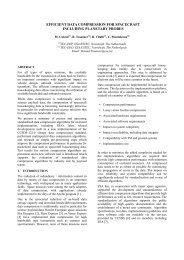Presentation 406 - International Planetary Probe Workshop
Presentation 406 - International Planetary Probe Workshop
Presentation 406 - International Planetary Probe Workshop
Create successful ePaper yourself
Turn your PDF publications into a flip-book with our unique Google optimized e-Paper software.
Parallel Development and Design Approach<br />
Mars Science Laboratory<br />
• Due to schedule constraints, MSL approached the heatshield design<br />
in a non-conventional way<br />
– PICA thickness was determined by the maximum mass allowed by the<br />
spacecraft mass budget<br />
• Uniform thickness of 1.25-in over most of the heatshield<br />
• Thickness margins were evaluated as test data was gathered (including<br />
uncertainty analyses); usual method of designing material thickness to a<br />
required thickness margin was not possible given short schedule<br />
– Heatshield design (tile layout, cut plans, etc) was occurring in parallel with<br />
thermal and thermostructural analysis and development testing<br />
• Maximum allowable gap size was determined from successful CEV tests on<br />
filled gaps and later refined through thermal and structural analysis and verified<br />
through tests<br />
• Angles between tile gaps and flowfield streamlines were based on previous<br />
tiled heatshield requirements (>20 for gaps longer than 6”) and testing<br />
limitations<br />
• PICA’s transverse isotropic behavior (k_ inplane > 2 * k_ TT ) led designers to tile<br />
designs that limited the fiber direction to


